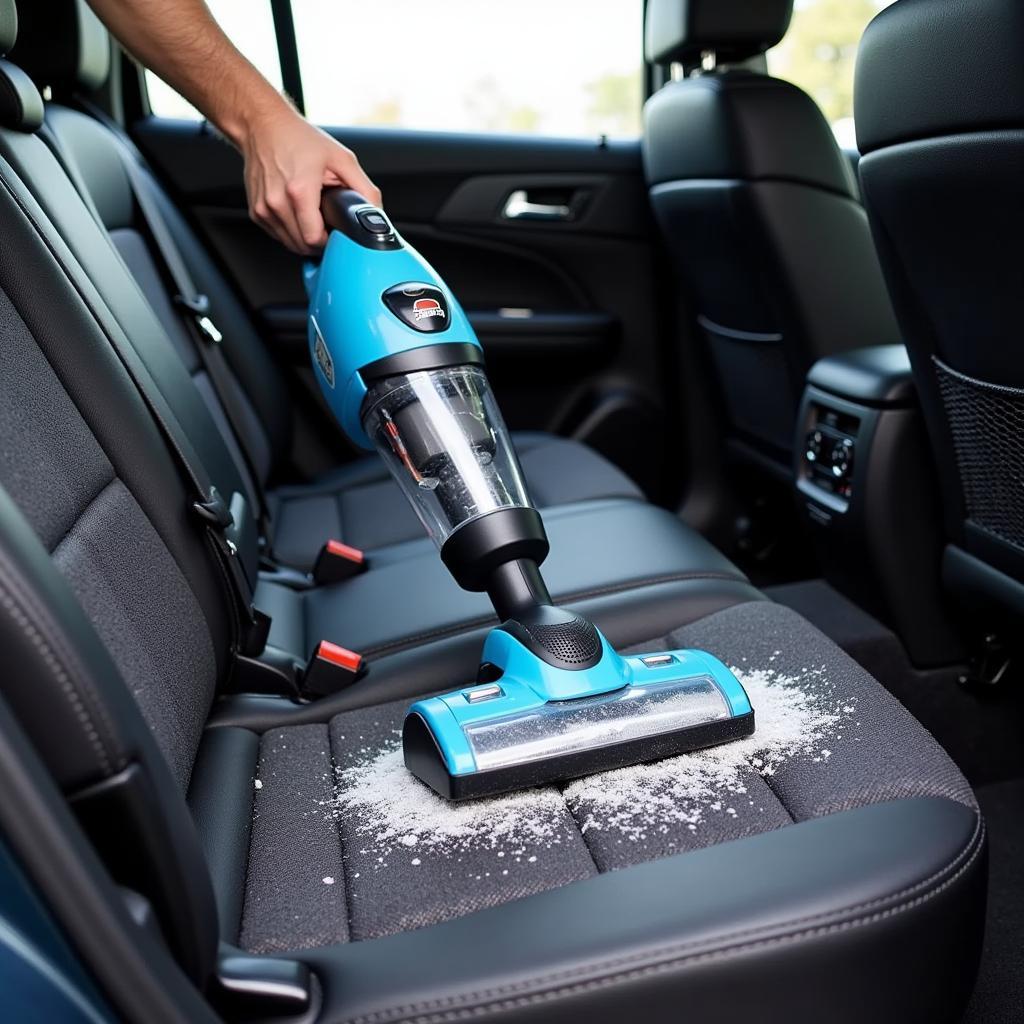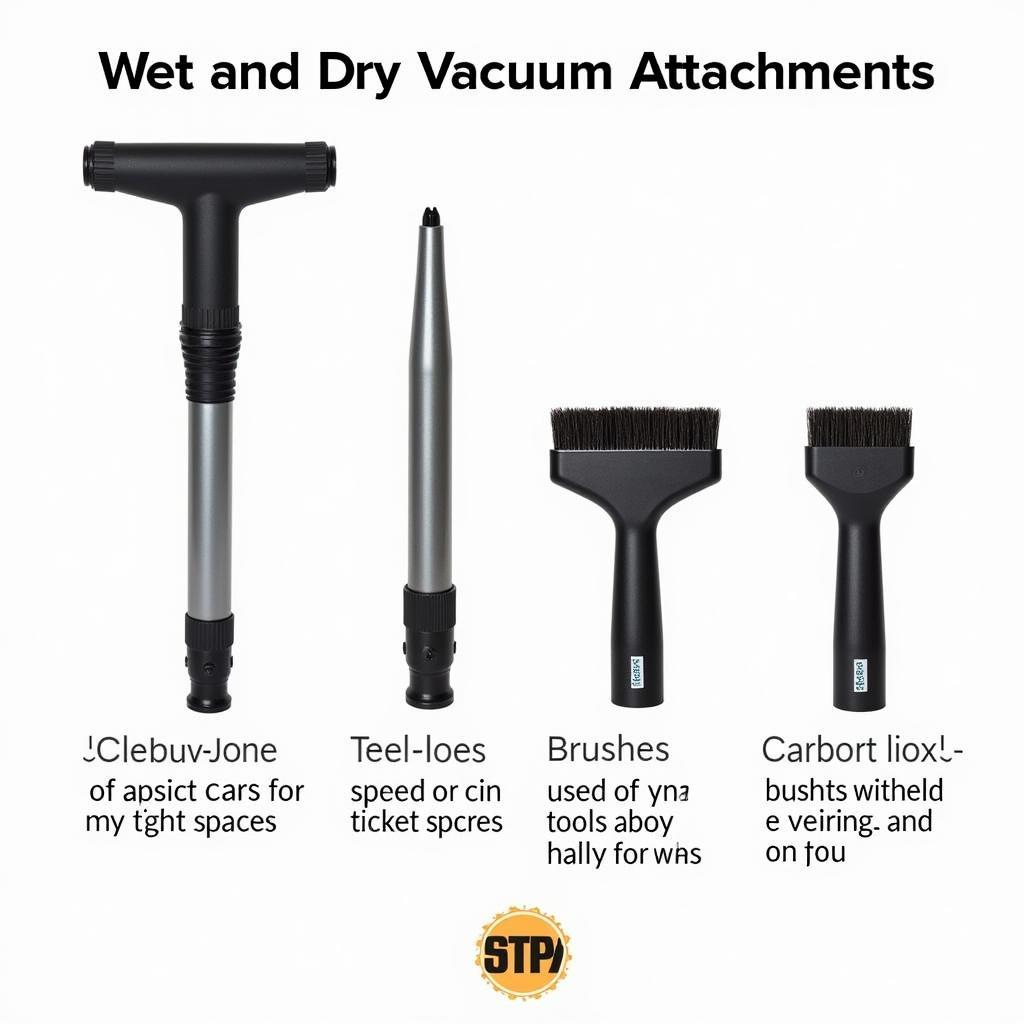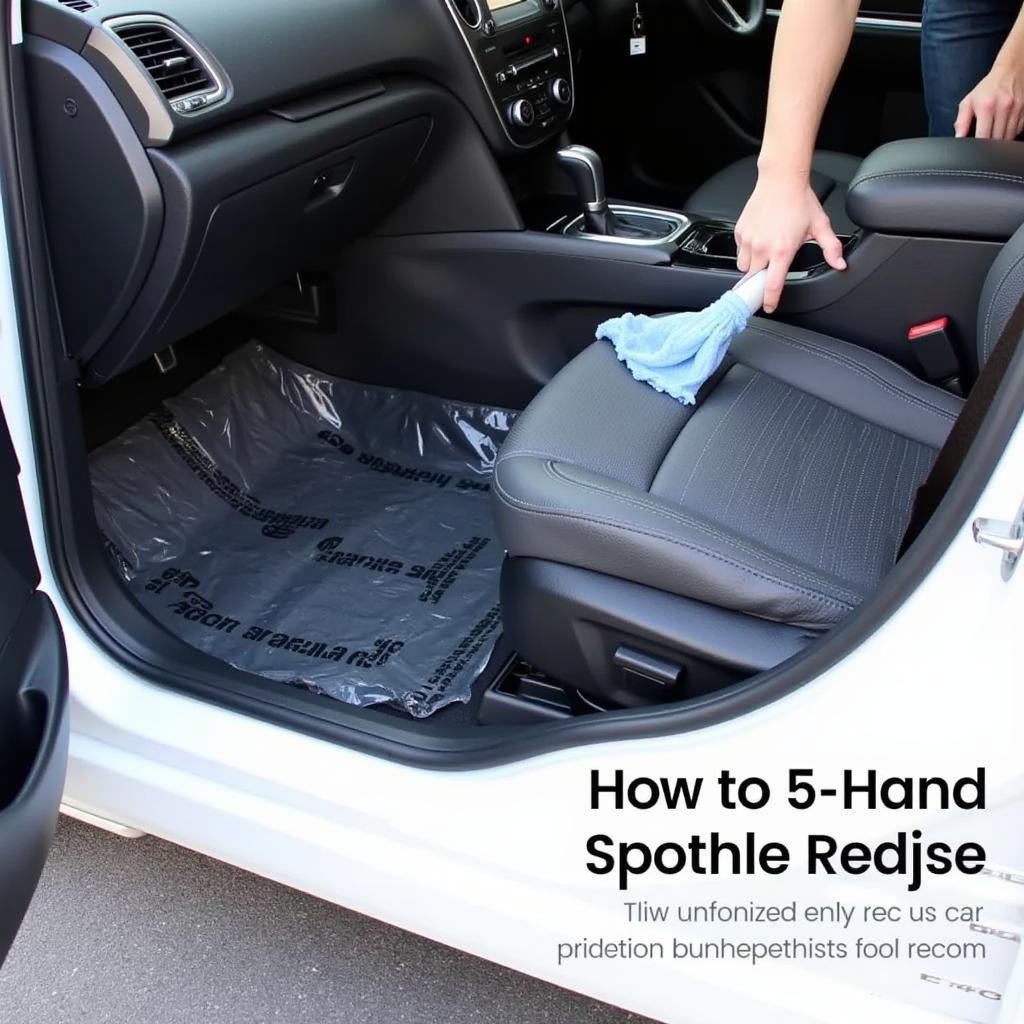Car Detailing Wet And Dry Vacuums are essential tools for achieving a professional finish. Whether you’re a seasoned detailer or just starting out, understanding the nuances of these powerful cleaning machines is crucial for maximizing your detailing efforts. This guide dives deep into the world of car detailing wet and dry vacuums, exploring their benefits, features, and how to choose the right one for your needs.
Why a Wet and Dry Vacuum is Essential for Car Detailing
A regular household vacuum simply won’t cut it when it comes to the rigors of car detailing. Car detailing wet and dry vacuums offer superior suction power, larger capacities, and the versatility to handle both wet and dry messes. They effectively remove dust, dirt, pet hair, and even liquids, making them indispensable for tackling a wide range of detailing tasks, from cleaning upholstery and carpets to extracting water after a shampoo. This allows for a more thorough clean, reaching deep into the fibers and crevices of your car’s interior.
 Car Detailing Wet and Dry Vacuum in Action
Car Detailing Wet and Dry Vacuum in Action
Choosing the Right Wet and Dry Vacuum for Your Needs
With a plethora of options available, selecting the right wet and dry vacuum can be daunting. Consider these key factors:
- Power (Amps/HP): Higher amperage or horsepower translates to stronger suction, essential for tackling stubborn dirt and embedded debris.
- Tank Capacity: A larger tank capacity reduces the frequency of emptying, crucial for extensive detailing jobs. Like with 5 gallon car detailing, choosing the right capacity is crucial.
- Filtration System: HEPA filtration is ideal for capturing fine dust and allergens, ensuring a healthier cleaning environment.
- Attachments: A variety of attachments, such as crevice tools, upholstery brushes, and extension wands, allow you to reach every nook and cranny of your car’s interior. Just like understanding what detailing a car meanng, knowing the purpose of each attachment is vital.
- Portability: Consider the weight and size of the vacuum, especially if you’ll be moving it around frequently.
Wet vs. Dry Vacuuming: Key Differences and Techniques
While a wet and dry vacuum offers both functionalities, understanding the specific techniques for each is important.
Dry Vacuuming:
- Thorough Preparation: Remove loose debris like leaves and larger particles before vacuuming.
- Systematic Approach: Work in sections, starting from the top and working your way down.
- Utilize Attachments: Use crevice tools for tight spaces and upholstery brushes for delicate fabrics.
Wet Vacuuming:
- Extract Excess Liquid: Remove as much standing water as possible before using the wet vacuum function.
- Proper Setup: Ensure the vacuum is configured for wet pickup, often involving removing or adjusting filters.
- Controlled Movements: Slow, deliberate movements prevent splashing and ensure effective liquid extraction.
 Various Wet and Dry Vacuum Attachments for Car Detailing
Various Wet and Dry Vacuum Attachments for Car Detailing
Maintaining Your Car Detailing Wet and Dry Vacuum
Proper maintenance is key to prolonging the lifespan of your wet and dry vacuum.
- Empty and Clean the Tank: Regularly empty and clean the tank after each use, especially after wet vacuuming.
- Clean/Replace Filters: Clean or replace filters according to the manufacturer’s recommendations.
- Check and Clean Hoses and Attachments: Inspect hoses and attachments for clogs and clean them regularly.
Similar to maintaining a professional car detailing garage setup, regular upkeep of your vacuum is crucial.
What are the benefits of using a wet and dry vacuum for car detailing?
A wet and dry vacuum offers superior cleaning power, handling both wet and dry messes effectively. This versatility is unmatched by standard vacuums.
How often should I clean my car detailing wet and dry vacuum?
Regular cleaning after each use, especially after wet vacuuming, is recommended. Clean or replace filters as needed. This is akin to maintaining your car detailing lex ky setup.
 Clean Car Interior After Wet and Dry Vacuuming
Clean Car Interior After Wet and Dry Vacuuming
Conclusion
Investing in a car detailing wet and dry vacuum is a game-changer for achieving professional-level results. Its versatility, power, and ability to tackle both wet and dry messes make it an invaluable tool for any detailer. By understanding the nuances of using and maintaining this essential piece of equipment, you can elevate your car detailing game to the next level.
FAQ
- Can I use a regular vacuum for car detailing? While possible, a regular vacuum lacks the power and versatility of a dedicated wet and dry vacuum.
- What type of filter is best for a car detailing wet and dry vacuum? HEPA filters are ideal for capturing fine dust and allergens.
- How do I clean a wet and dry vacuum after wet vacuuming? Empty the tank, clean it thoroughly, and allow it to dry completely.
- What are some common attachments for a car detailing wet and dry vacuum? Crevice tools, upholstery brushes, and extension wands are commonly used.
- How do I choose the right size wet and dry vacuum? Consider the size of your vehicle and the frequency of detailing.
For further information on car interiors, check out our guide on inside car detail.
Need assistance? Contact us via WhatsApp: +1(641)206-8880 or Email: [email protected]. Our customer support team is available 24/7.

Leave a Reply